
Curtains made of nettles was so exclusive it was forbidden for ordinary people
Nettle curtains, also known as Nordic silk, was so expensive and exclusive that it was forbidden by law for ordinary people in 1720.
Ellen Pauline Steen is the section leader at Buskerud Museum, with daily responsibility for Fossesholm Manor.
Recently, something completely unexpected was found at the manor house, and it is this discovery she chooses to talk about when sciencenorway.no asked her to choose one thing from the museum.
The manor house dates back to the mid-16th century but was expanded and modernised when the married couple Jørgen von Cappelen and Magdalena Larsdatter Darjes moved in in 1763.
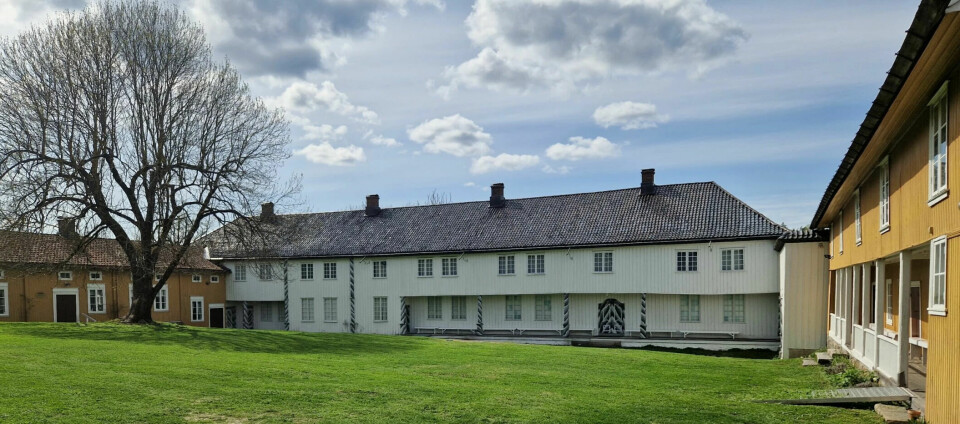
Painted and hand-printed wallpapers
Steen shows the impressive living rooms that are lined up in a row. Some rooms have painted wallpapers from floor to ceiling, while others have hand-printed wallpapers. The building is 50 metres long, has 22 rooms, and is 1,000 square metres in size.
The restoration work has been extensive. When Eiker Historical Society bought the farm in 1973, the grand furnishings were gone, and the hand-painted wallpapers were hidden behind new layers of wallpaper.
When von Cappelen died in 1785, his nephew and his wife inherited Fossesholm. The family went bankrupt in 1822, the possessions were sold at auction, and the farm was sold to established farmers in Eiker. The years passed, with the division of the farm and owners who did not have von Cappelen's manor ambitions.
Eiker Historical Society and later Buskerud Museum have spent many years restoring the buildings to their former glory during von Cappelen’s ownership.
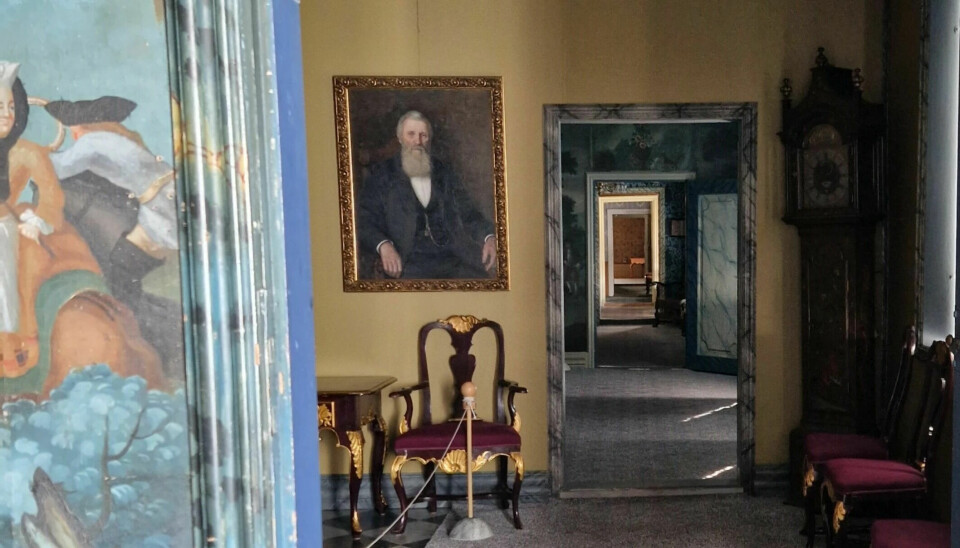
Every item was documented
All restoration work is done thoroughly and professionally.
Fossesholm has the largest collection of hand-printed and hand-painted canvas wallpapers in the country. All the wallpaper was found under layers of newer wallpaper.
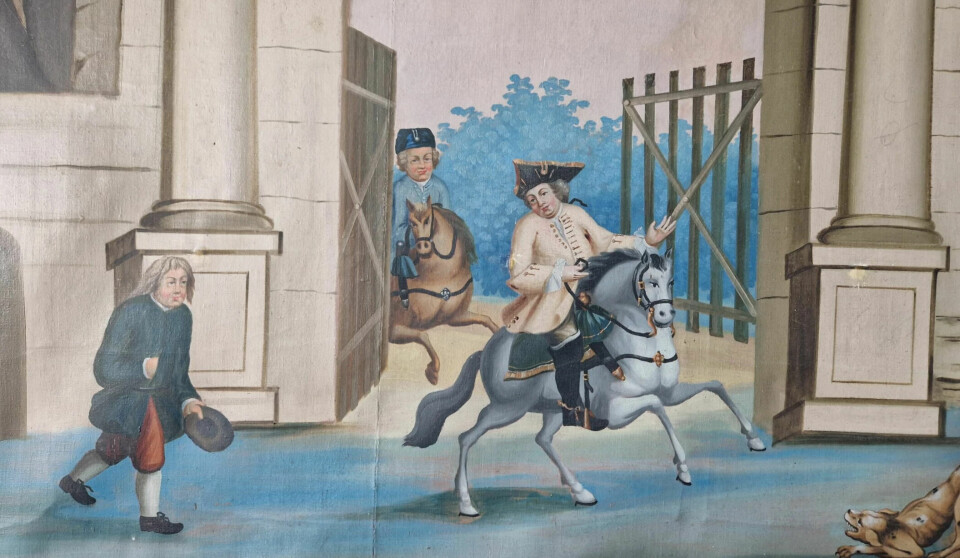
Now the rooms are filled with beds, chairs, tables, radiators, and wallpaper as they were at the end of the 18th century.
Except for the curtains. They are only 40 years old.
Last year, Steen started the task of finding out which curtains hung there during von Cappelen's time.
She first consulted the probate record. When Jørgen von Cappelen died, everything in the manor house was appraised. The values had to be determined before distribution to the heirs.
The district court’s staff went through every room in the manor and noted down every single item they found. They put a price tag on each piece of furniture, ladle, bucket, and curtain because everything was to be sold at auction.
The manor house had two large textile chambers, which were rooms for storing fabrics. Every pillowcase and napkin was carefully counted and documented. The protocol shows that von Cappelen had over 600 napkins, piles of bed linen, and curtains.
But which curtains hung where? What did they look like? Which ones belonged to the beautiful living rooms with handmade wallpaper, wall art, and period furniture?
Found the list with the curtains
“The curtains were often packed away and then hung up when guests arrived. Textiles were expensive, and they did not want them to fade from sunlight and deteriorate. Normally, they covered the windows with frames covered in fabric or paper to shield from both prying eyes and the sun,” Steen says. “We have compared the probate records with the auction records. We see that clothes and textiles were sold.”
But in the probate records, she makes a discovery. The list from the textile chamber includes many curtains.
At one point in the list, Steen stops.
“There were six pieces of nettle fabric curtains listed, followed by two curtains of the same fabric on the next line, then four, and then several sets of two curtains and finally four. It matches perfectly with the windows on the first floor. I thought: ‘Wow, here they are, lined up in a row’,” Steen says.
The Nordic silk was made from nettles
Nettle fabric was a very expensive textile. Therefore, they can be sure that these curtains were used in the finest rooms.
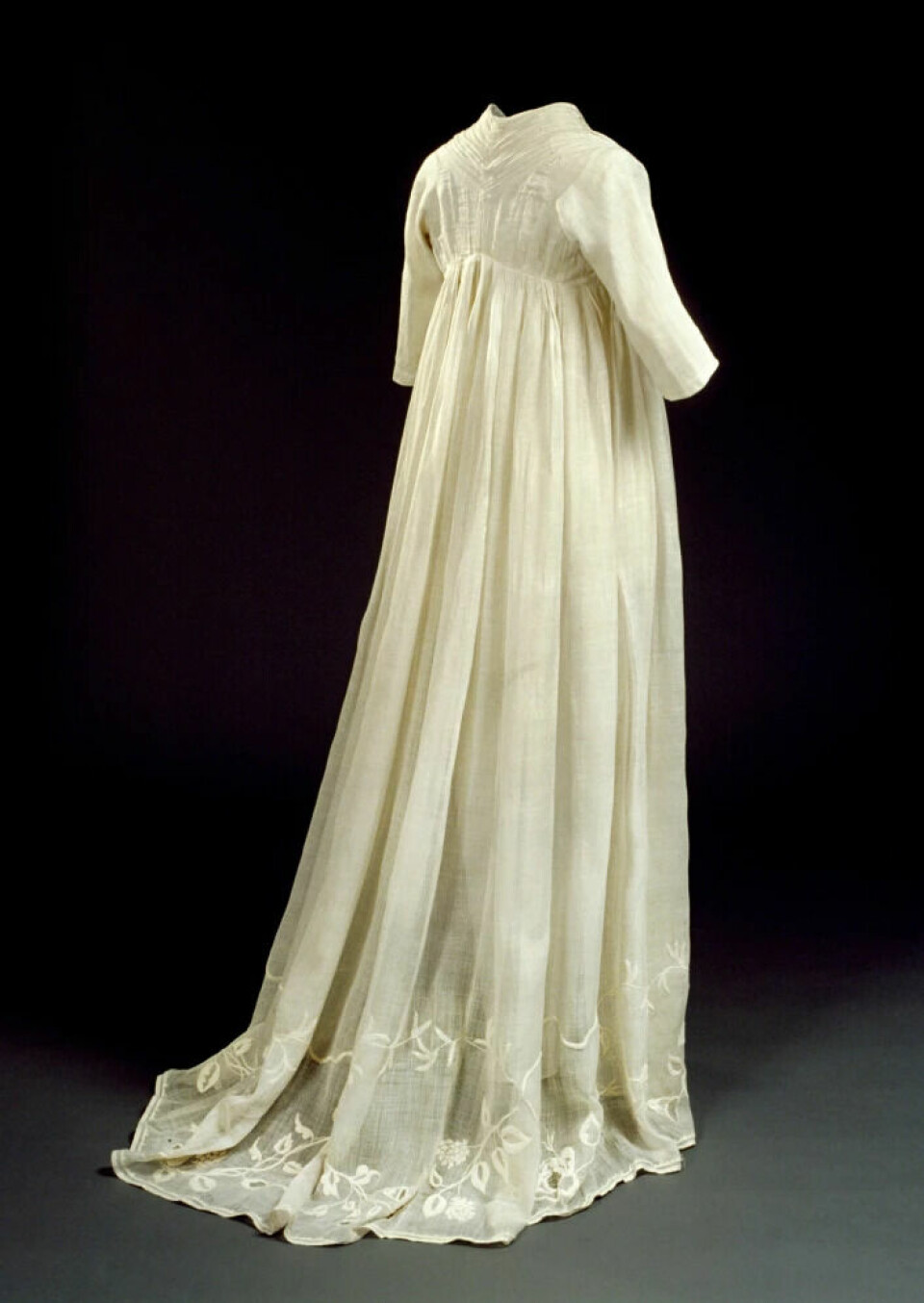
Nettle fabric is made from nettles.
“It is very thin but stiffer than cotton,” she says.
Nettle has been an important plant in earlier times. The oldest woven textile found in Northern Europe is 2,800 years old. It was found in Denmark when archaeologists examined a grave from the Bronze Age. Some small pieces of fabric were attached to a burnt corpse. It turned out that the fabric was made of nettle.
Since then, the strong fibers in the nettle stalks have been used to make rope, baskets, fishing nets, shoes, and paper. Woven nettle fabric was used for shirts, bed linen, and curtains. Textiles made from nettle were produced in several places in Norway. When nettle fabric was made into thin, white, and shiny material, it was called Nordic silk, according to a report from the Norwegian Crafts Institute. It was so expensive and exclusive that it was forbidden by law for ordinary people in 1720.
Nettle fabric was outcompeted by cheap cotton, and with it disappeared the knowledge of how to make nettle yarn and woven fabric.
Reviving an old craft
Sally Pointer is a British archaeologist who now works with traditional crafts. She has made an instructional video on the simplest way to make string from nettle. She recommends finding tall, fine nettles. Cut the entire plant and remove the leaves.
Then open the stem with a knife or your fingernails. The fibers run lengthwise in the stem, and each fiber is as long as the distance between the leaf joints. Beneath the bark, you will find long threads. Divide them into as thin strands as possible. Make small, airy bundles of the nettles. Tap them gently, but not too hard.
Now hang them up to dry and wait a few hours. Divide the fibers into even thinner threads. Dry them again if necessary. Then twist and twine until you have a firm thread. This thread can be spun and knitted.
Nettle has become relevant again. The plant grows in Norway and is more environmentally friendly than imported materials. Today, you can buy clothes made with a certain percentage of nettle and the rest of cotton.
The Norwegian Crafts Institute now has a project documenting the old craft.
It is not known where the Fossesholm manor obtained its nettle curtains, but the probate record describe their appearance.
They were white, some with stripes, others with checks. They had fringes and tassels. All the windows on the first floor had Roman blinds.
“Now we know the material and the colour, but we don't know exactly what the stripes and fringes looked like,” Steen says.
Found hanging in the storage room
They rely on expertise from England and Norway. They also study what other manor houses from the same time period had for curtains.
“We visited the manor house in Larvik. They had found a pelmet. We were so envious because it tells us how the curtains were hung,” Steen says.
Then one day, Steen went to fetch something in a storage room on the second floor. Things had been stowed away there for hundreds of years. When you enter the dark room, you are blinded by the light from the window on the opposite wall.
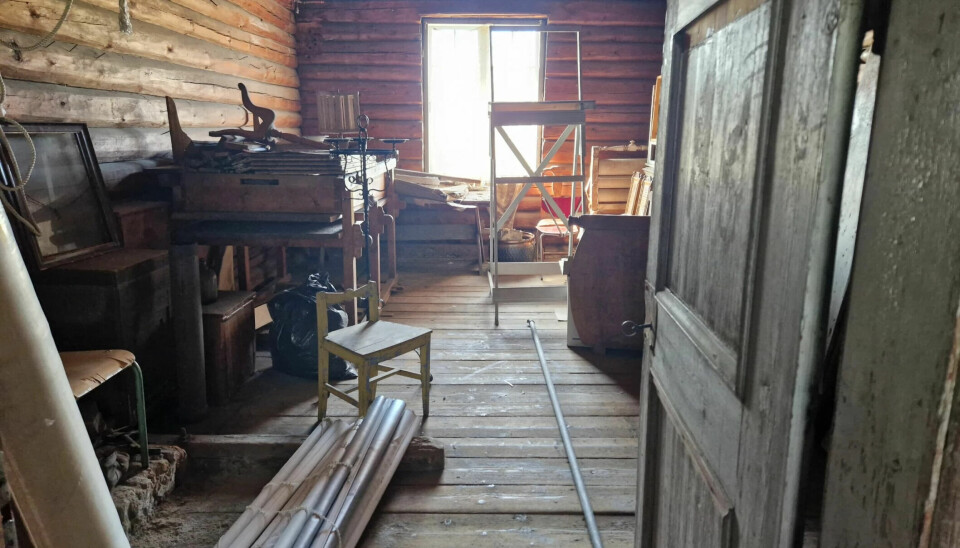
On that day, she and a colleague looked more closely at the window, and then her colleague saw it.
“At the top of the window, there was pelmet. And it’s an original from the 18th century. I can't believe I hadn't noticed it before because I know this house inside out,” Steen says.
18th century pelmet
The pelmet reveals how the curtains were hung. An ancient canvas string is still attached to the pelmet, fastened with hand-forged rivets.
“They attached the curtains to the string with pins. These curtains couldn’t be drawn aside,” Steen says.
The fact that they now have the pelmet and knowledge of how they were hung has significantly advanced the curtain project.
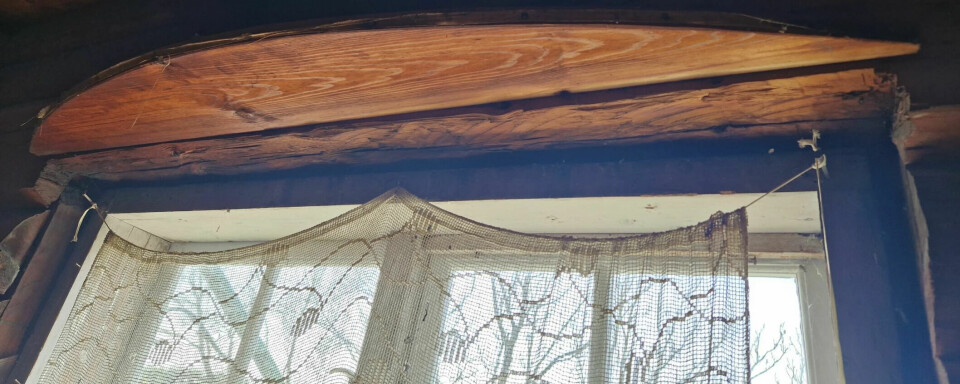
Have bought nettle fabric
Now she has bought metres of nettle fabric from England.
“It is made from Asian nettle, but there was a lot of importation in the 18th century, so it’s possible they also got the fabric from Asia back then,” Steen says.
With the help of experts, they are now sewing many samples to figure out how the new curtains can resemble the old ones as much as possible. The fringes and tassels will be handwoven in England since they cannot be purchased anywhere. The local handicraft association in Eiker will sew the curtains by hand.
When the curtains are in place, they will be one step closer to restoring Fossesholm to its former glory as a grand estate. However, there is still much to be done.
They are currently working on restoring the old park and conducting excavations to determine exactly what grew there and how it was arranged.
———
Translated by Alette Bjordal Gjellesvik.
Read the Norwegian version of this article on forskning.no
References:
Einar Sørensen: Fossesholm og herregårdstiden (Fossesholm and the manor house era), Novus, 2022.
Fride Kramer Riseng: Fra plante til plagg. Tilvirkning av brenneslegarn i trøndersk tradisjon (From plant to garment. Production of nettle yarn in the Trøndelag tradition), Report from the Norwegian Craft Institute, 2022.



































